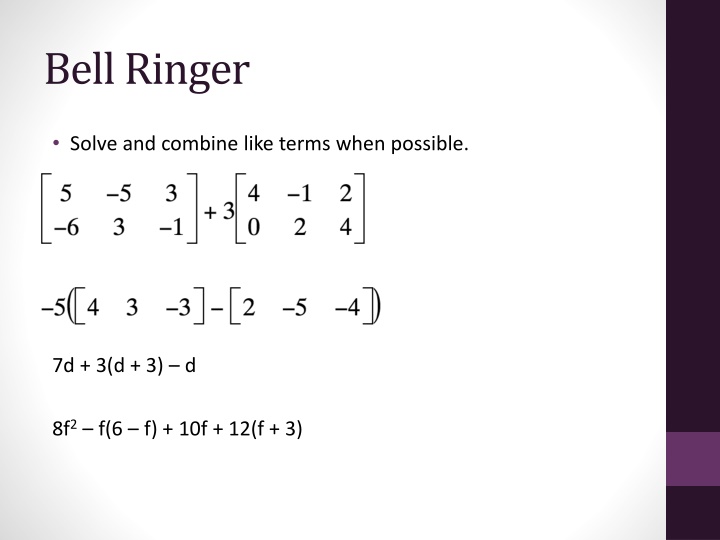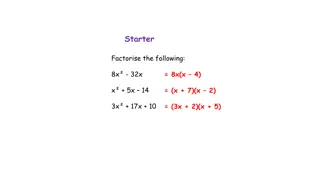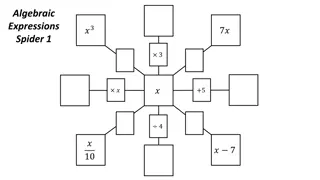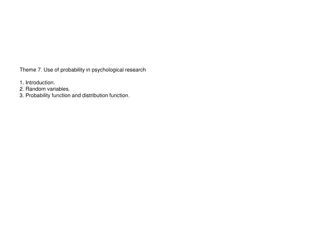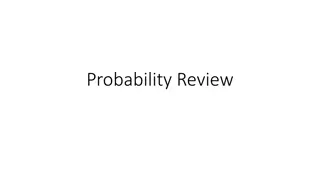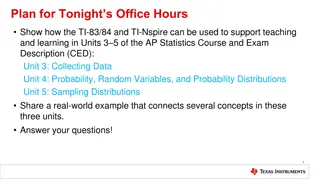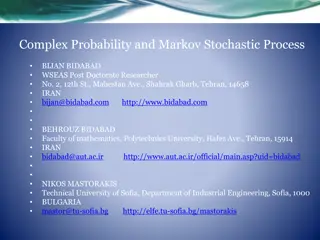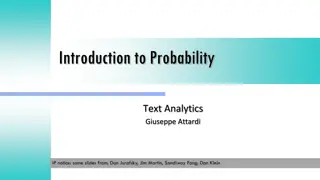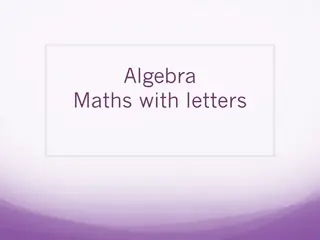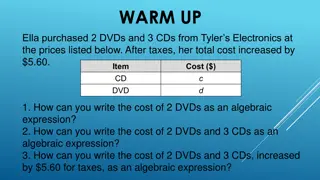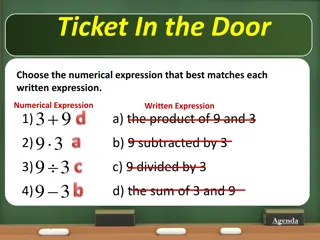Solving Algebraic Expressions and Probability Concepts
In this content, we delve into solving algebraic expressions by combining like terms, followed by an exploration of probability concepts such as events, sample space, theoretical probability, and more.
Download Presentation

Please find below an Image/Link to download the presentation.
The content on the website is provided AS IS for your information and personal use only. It may not be sold, licensed, or shared on other websites without obtaining consent from the author.If you encounter any issues during the download, it is possible that the publisher has removed the file from their server.
You are allowed to download the files provided on this website for personal or commercial use, subject to the condition that they are used lawfully. All files are the property of their respective owners.
The content on the website is provided AS IS for your information and personal use only. It may not be sold, licensed, or shared on other websites without obtaining consent from the author.
E N D
Presentation Transcript
Bell Ringer Solve and combine like terms when possible. 7d + 3(d + 3) d 8f2 f(6 f) + 10f + 12(f + 3)
Probability Mr. Haupt CC.2.1.8.E.1
Probability The probability of an event tells you how likely it is that something will occur. It is written like this: P(event) So, the probability of getting tails when flipping a coin would be written as P(tails)
Outcome The outcome is the result of a single trial. As in the roll of a dice, the flip of a coin, one pick out of a bag of marbles, etc. Favorable outcome the outcome we want to happen. If we want to roll a 4 on a dice, then that is our favorable outcome.
Sample Space The list of all possible outcomes is called the sample space. If we are talking about rolling a dice, the sample space would be 1,2,3,4,5,6
Event An event is any outcome or group of outcomes.
Example of how this works. Say we would want to find the probability of rolling an even number on a dice. Event Rolling an even number. Sample Space 1,2,3,4,5,6 Favorable Outcome 2,4,6 We will use this information to find the theoretical probability.
Theoretical Probability The theoretical probability in the easiest terms is: what SHOULD happen. We can find the theoretical probability with this formula: P(event) = number of favorable outcomes number of possible outcomes The theoretical probability of getting tails on a coin flip is .5 or 50% This does not mean that these will be your actual results.
Theoretical Probability Continued The probability of an event can be written as a fraction, a decimal, or a percent. In terms of decimals, the range goes from 0 to 1. 0 Impossible Equally Likely Event 0.5 1 Certain Event as not Ex: Rolling a 7 on a dice when flipping coin 7 on a dice Getting tails Rolling less than
Complement of an Event The complement of an event is all the outcomes not included in the original event. So if we go back to rolling a dice, the possible outcomes are 1,2,3,4,5,6. If we look at rolling an even number 2,4,6, then the complement to that event would be all the odd numbers 1,3,5.
Odds Sometimes we see probability in the form of odds, especially in sports, gambling, etc. We use odds to compare favorable and unfavorable outcomes. The odds of flipping tails are 1 to 1, or 50/50. The odds of the Eagles winning the Super Bowl are 1 million to 1. (Actually it is 20 to 1 according to Vegas, but believe me, it ain t happening.)
Experimental Probability Experimental probability is what you actually get when you perform the trials. We use the following formula to find it: P(event) = number of times the event occurs number of times the experiment is done The theoretical probability of getting heads is 50%, but let s say you try it 20 times and get 12 heads and 8 tails, your experimental probability is 60%.
